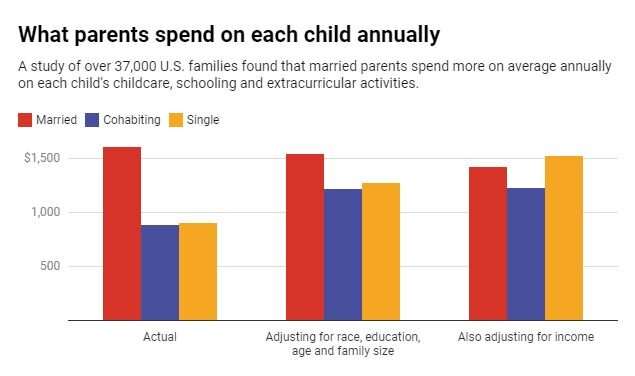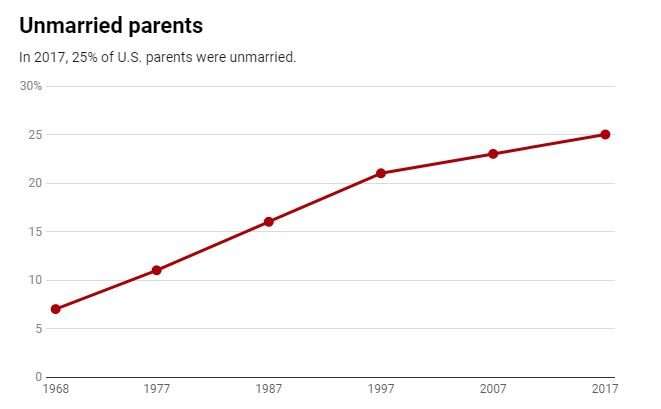A quarter of US parents are unmarried, and that changes how much they invest in their kids

Family structure in America is .
While 84% of children whose mothers have a bachelor's degree or higher-level education live with married parents, only 58% of children whose mothers have a high school degree or less do so. And while 75% of white children live with married parents, just 38% of black children do so.
This family inequality appears to have real consequences for children's chances in life. Compared with children who grow up in cohabiting or single-parent families, those who grow up with stable married parents generally have better , are more likely to and have higher .
Why? Families with different structures parent differently—and that can perpetuate inequality across generations. Children in the U.S. are growing up in an with many childhoods filled with piano lessons and private tutors, traveling sports teams and summer camps. While costly, these activities become a that can improve their children's grades, chances of getting into a selective university and future job opportunities.
The key finding of , presented at the 's annual conference in August, is that family structure plays a role in how much parents spend on their children.
Gaps in parental investments
at the spending patterns of more than 37,000 families with children who participated in the between 2003 and 2017.

We focused on three categories of spending on children: child care, schooling and extracurricular activities.
We find married parents spent nearly twice as much—roughly US$700 more per year per child—on these investments in children than cohabiting and single parents spend. When we compare households that are similar in terms of race, education, age and family size, we find married parents still spend roughly $300 more per child.
What causes this gap? One explanation is economic. Single-parent households have much and compared to married-parent households.
Once we account for these income differences, the gap between single parents and married parents goes away. In fact, if married and single parents had the same incomes, our model predicts single parents would spend slightly more on parental investments. In other words, single parents spend roughly an equivalent percent of their income of their children.
But, income accounts for less than half the difference in spending on children between married parents and unmarried parents who live together. So what else is a factor?
Although it's more common than ever for unmarried people to live together, these cohabitations are than marriages.
This relationship instability may depress spending on children if parents and partners are than other parents.
Cohabiting stepfathers also appear to be to stepchildren than stepfathers who are married to the child's mother, which could shape household spending decisions.

Long-term consequences
Family structure is an important part of inequality in contemporary America. A growing share of American households with children are .
There's no simple solution to reducing these spending inequalities, but we think our findings can inform policy in a couple of ways.
Because the disadvantage in single-parent families stems from a lack of economic resources, policies like the , which provides low-income working families with a refundable tax credit, put money directly in the pockets of single-parent families. This would likely reduce these gaps in parental investments.
However, for unmarried couples with children, the disadvantage in spending isn't just caused by lower incomes. While one might suggest cohabiters get married, it's not clear that the commitment to long-term investments in children would necessarily follow.
For the children of cohabiting parents—and for all children—we think that direct public investments in children through policies such as and child could reduce inequalities and increase opportunities for children growing up in different types of families.
Provided by The Conversation
This article is republished from under a Creative Commons license. Read the .![]()

















